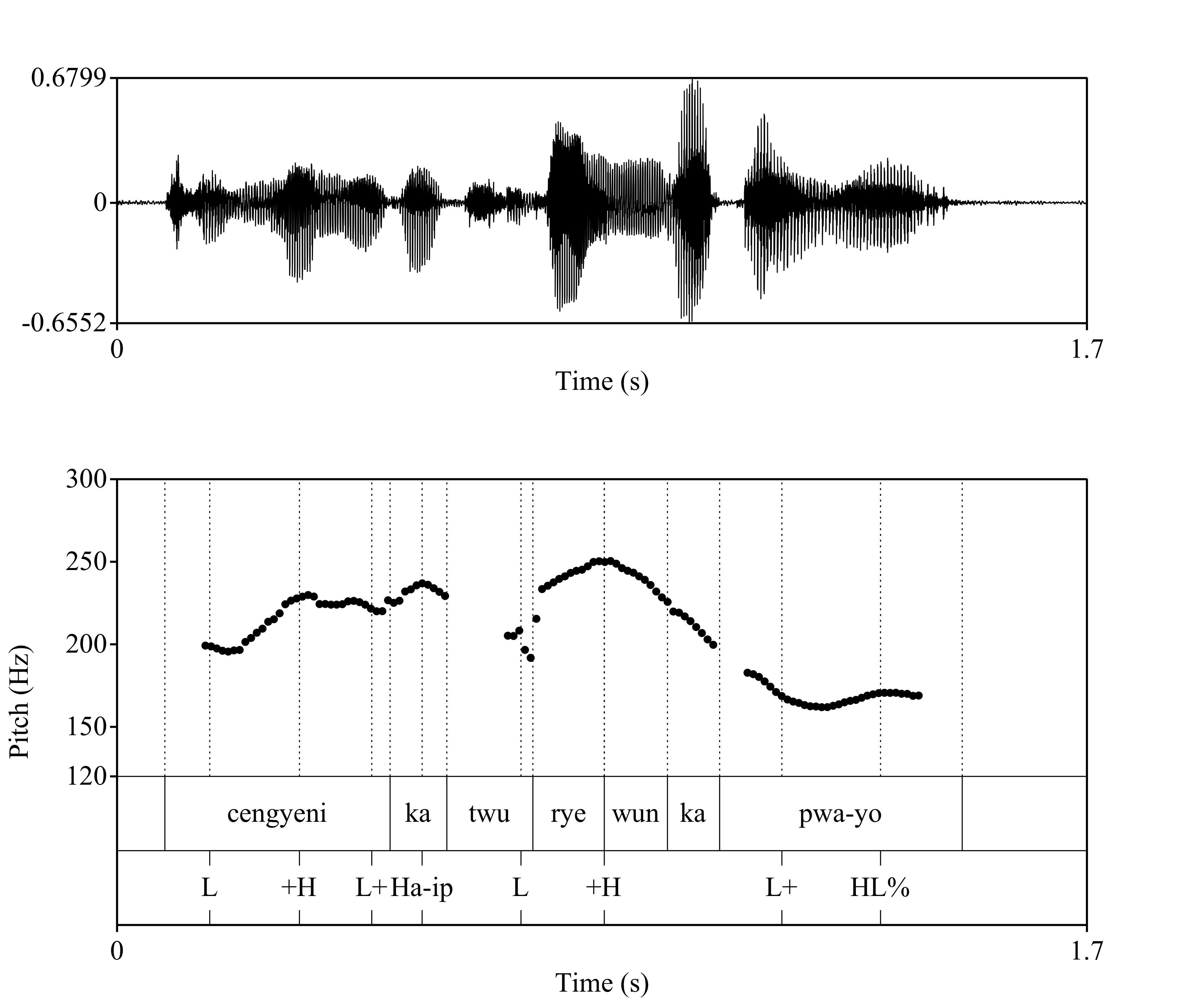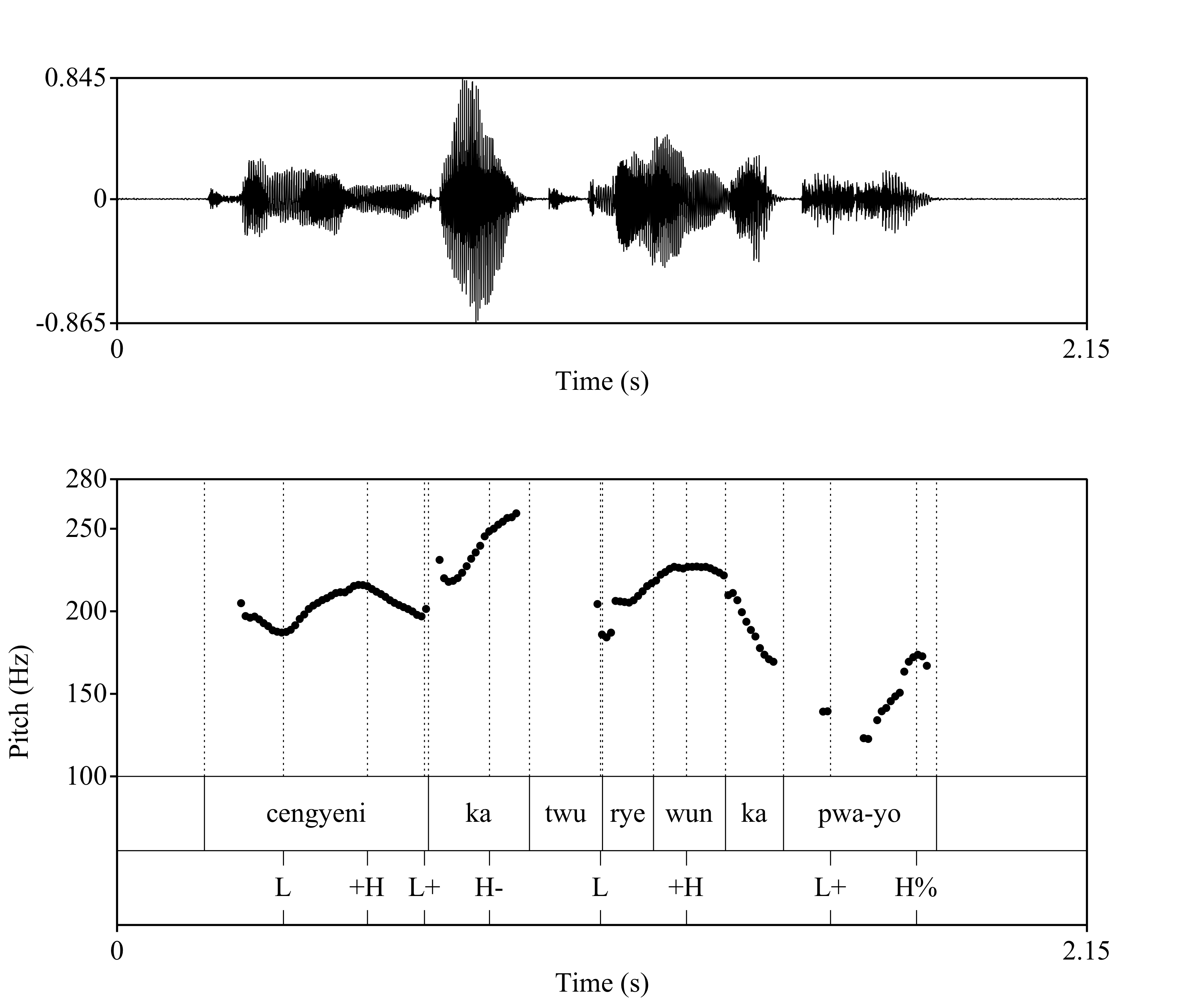Prosodic resolution of syntactic/semantic ambiguity in Korean psych-predicate constructions
In a sentence like "정연이가 두려운 가 봐요," is 정연 experiencing the psychological state of fear or is someone else (not mentioned in the sentence) fearing 정연? The former is called the 'experiencer reading' (where 정연 is the experiencer of the psychological state) and the latter is the 'stimulus reading' (where 정연 stimulates such psychological state in someone else). My research shows that the two meanings of the ambiguous sentence are said with different prosodies. I initially explored only two different types of prosodic phrases in Korean (Acceptual Phrase and Intonational Phrase) in Ahn (2017). But in Ahn (2018), I dug deeper into the full range of Korean prosody and showed that all four prosodic phrases can contribute to the resolution of ambiguity and that the mapping between prosody and syntax is intervened through the information structure of the discourse. My most recent paper on this topic (Ahn, 2020) used the same prosodic distinction as in Ahn (2017) to test English native speakers who learned Korean as a second language on their ability to resolve ambiguity through prosody.
- Ahn, H. (2020). L2 Korean speakers' thematic role resolution in a psych-predicate construction. Language Research, 56 (2), 141-165.
- Ahn, H. (2018). Prosody, syntax, and discourse: A three-way interaction. Korean Journal of Linguistics, 43 (1), 73-100.
- Ahn, H. (2017). The prosodic resolution of syntactic/semantic ambiguity: An exemplar-based account. Language Research, 53 (3), 501-524.
Below is a collection of four different speakers on the same sentence using four different prosodies. Can you guess which prosody is for the experiencer reading and which is for the stimulus reading? Try and play all four sound files, and guess which prosody has which meaning. The answer keys are on the bottom of this page.
(1) Accentual Phrase (AP) Boundary

(2) Intermediate Phrase (ipF) Boundary – Focus

(3) Intermediate Phrase (ipS) Boundary – Syntax

(4) Intonational Phrase (IP) Boundary

Both (1) the accentual phrase (AP) and (2) the focus intermediate phrase (ipF) were observed to be used for both experiencer and stimulus readings. However, statistically significant correlations were found amongst (1) AP, the experiencer reading, and the discourse-initial location and among (2) ipF, the stimulus reading, and the discourse-final position. This means that AP is more likely used for the experiencer reading discourse-initially whereas the ipF is more likely used for the stimulus reading discourse-finally. (3) The syntactic intermediate phrase and (4) the Intonational Phrase never occur with the stimulus reading. Both are reserved for the experiencer reading.
Were you able to tell which prosody was for which meaning? The results were obtained from a production study, which means, certain meanings elicited certain prosodies. I am planning to investigate whether the inverse will also work. That is, will prosodies be able to evoke certain meanings? Stay tuned! I'll keep you updated ;)